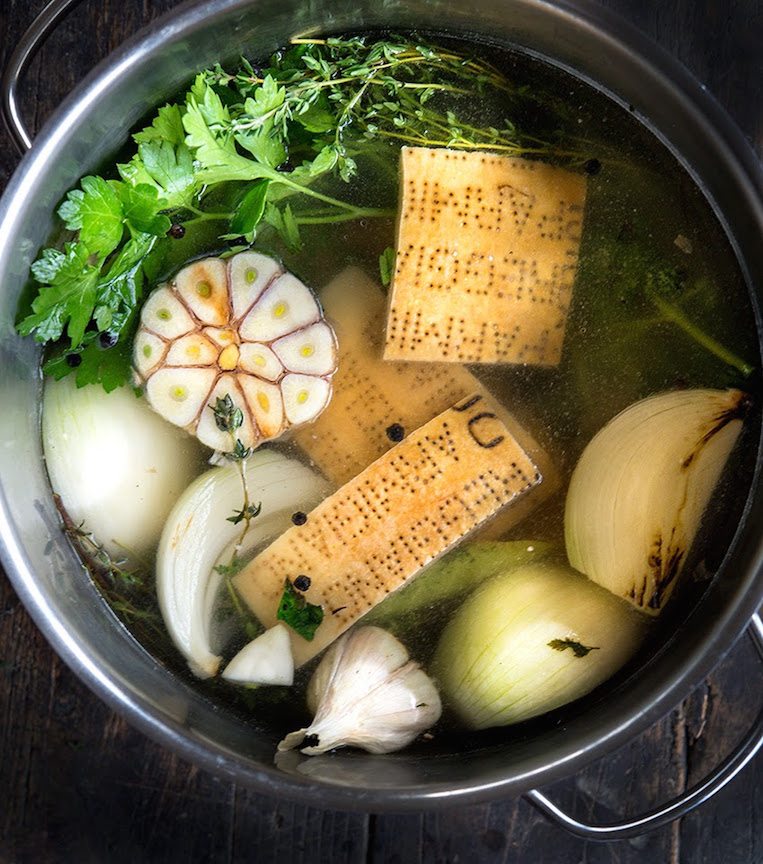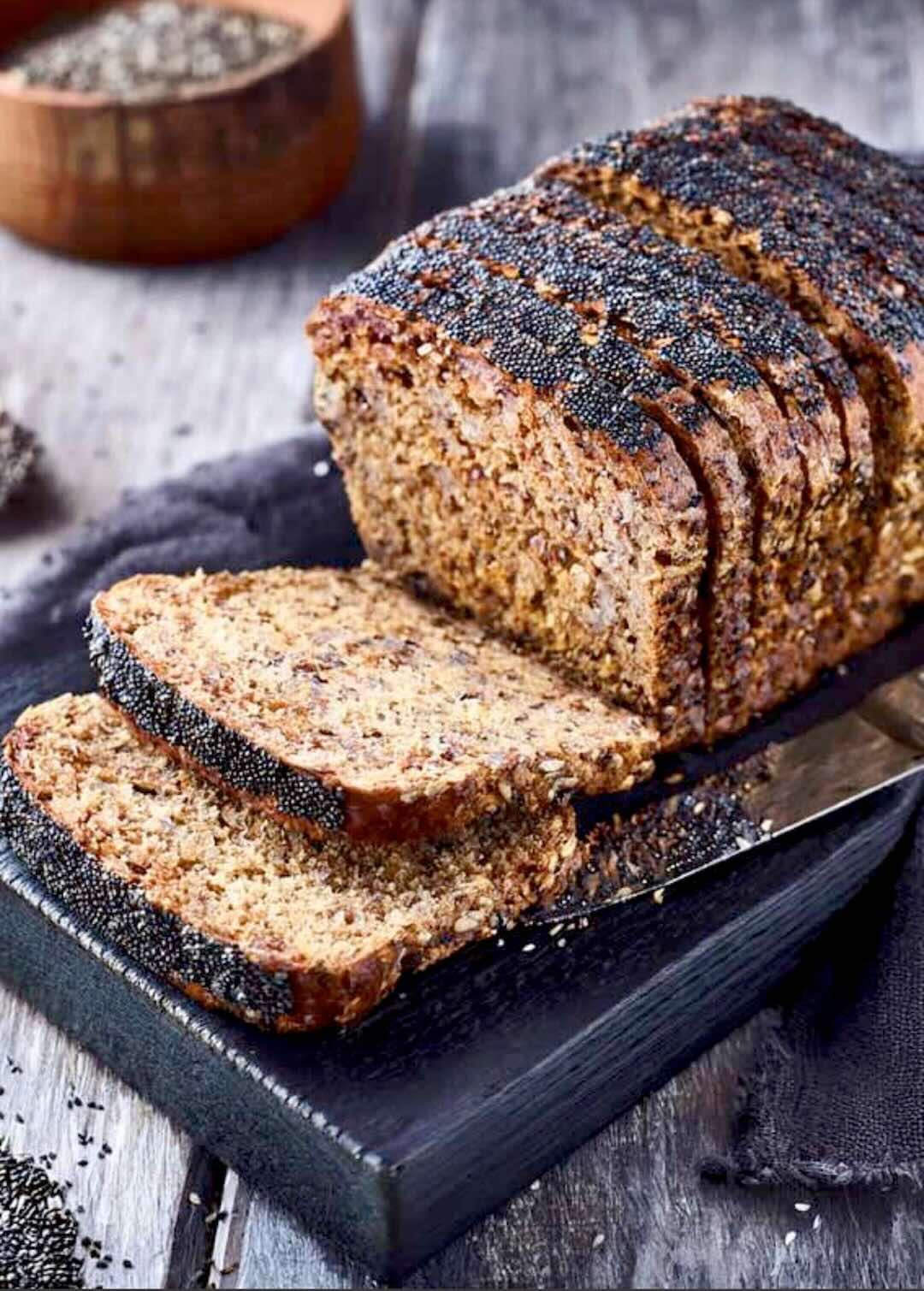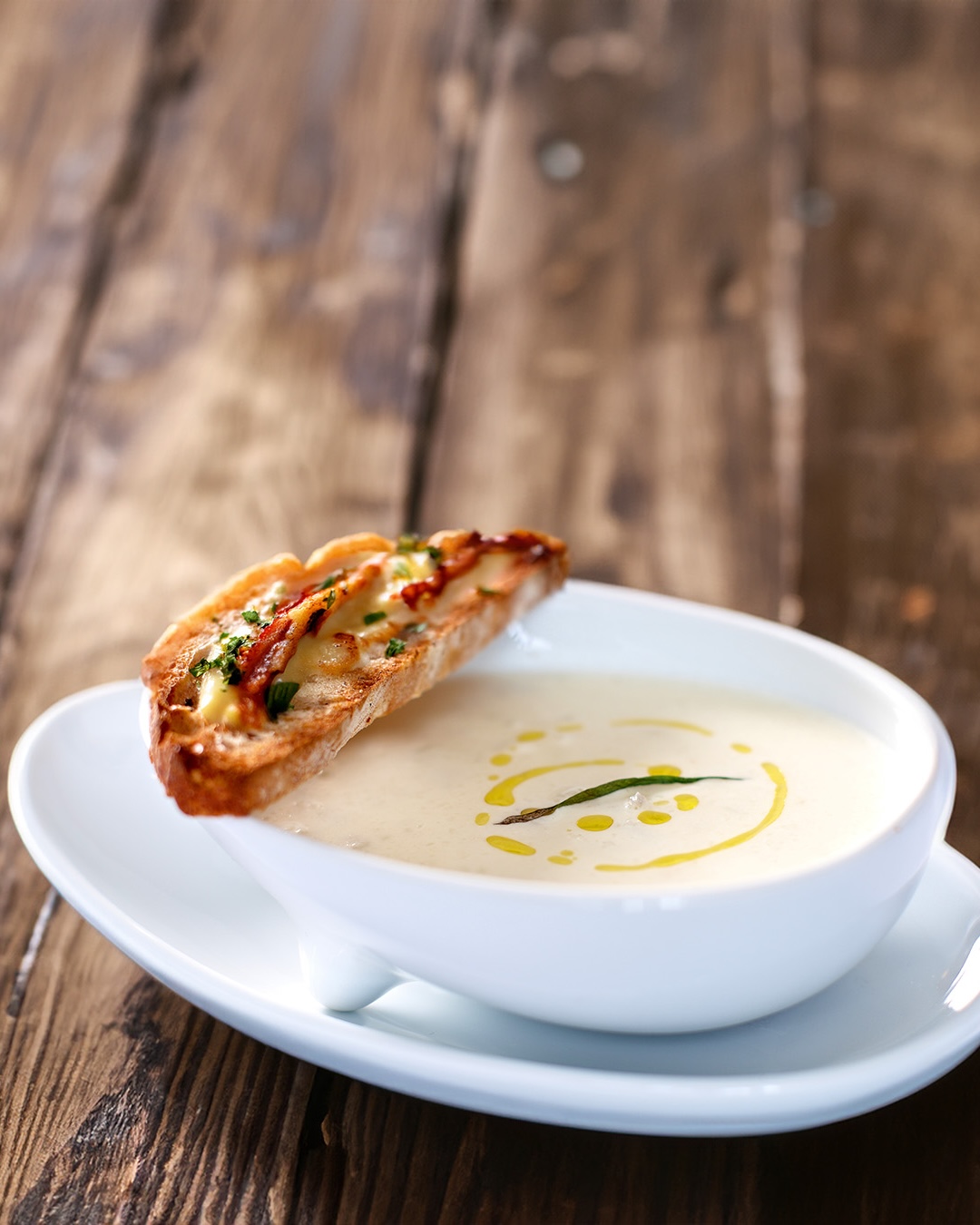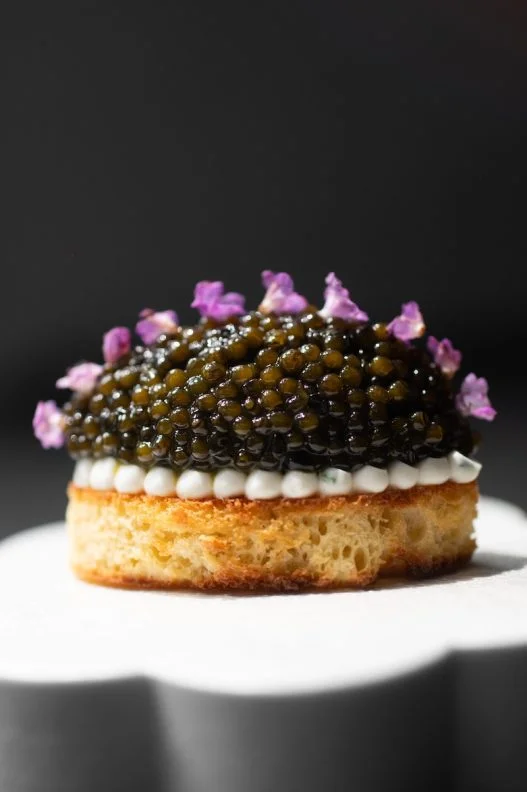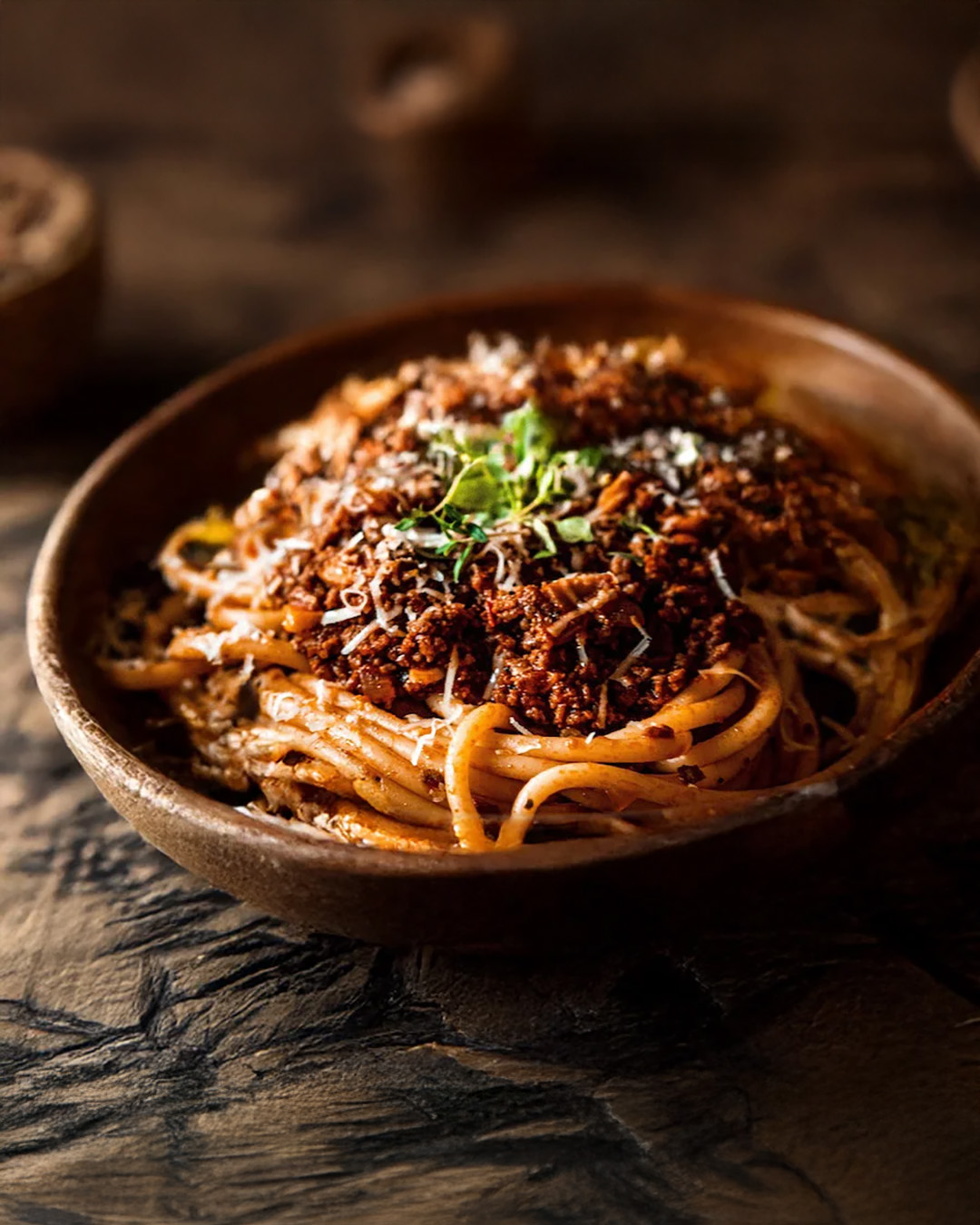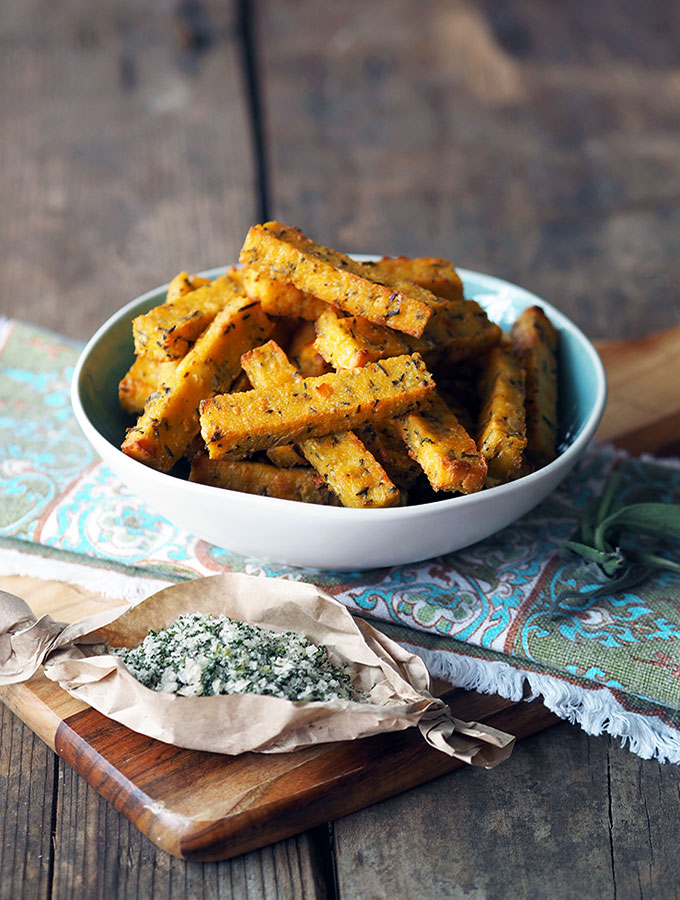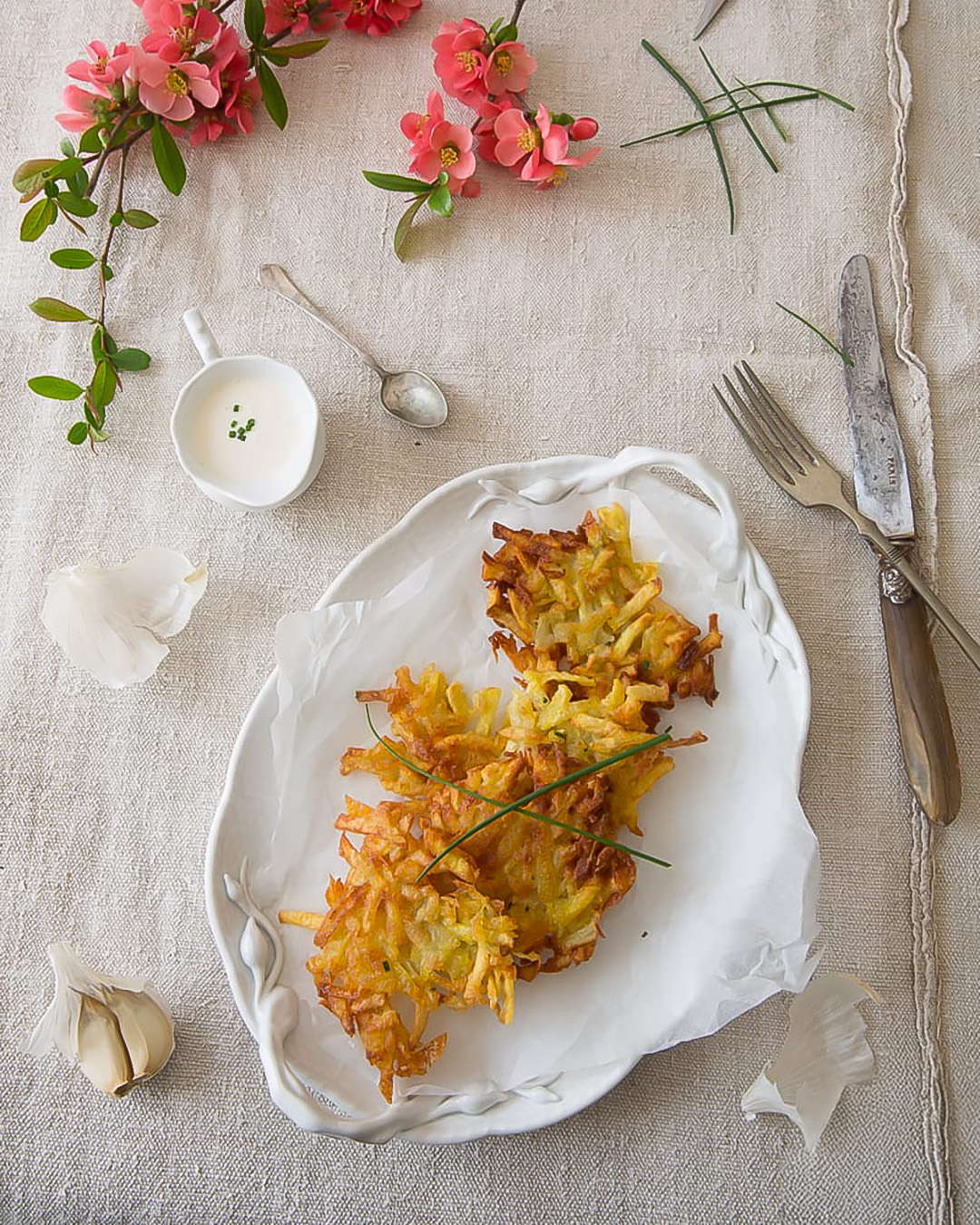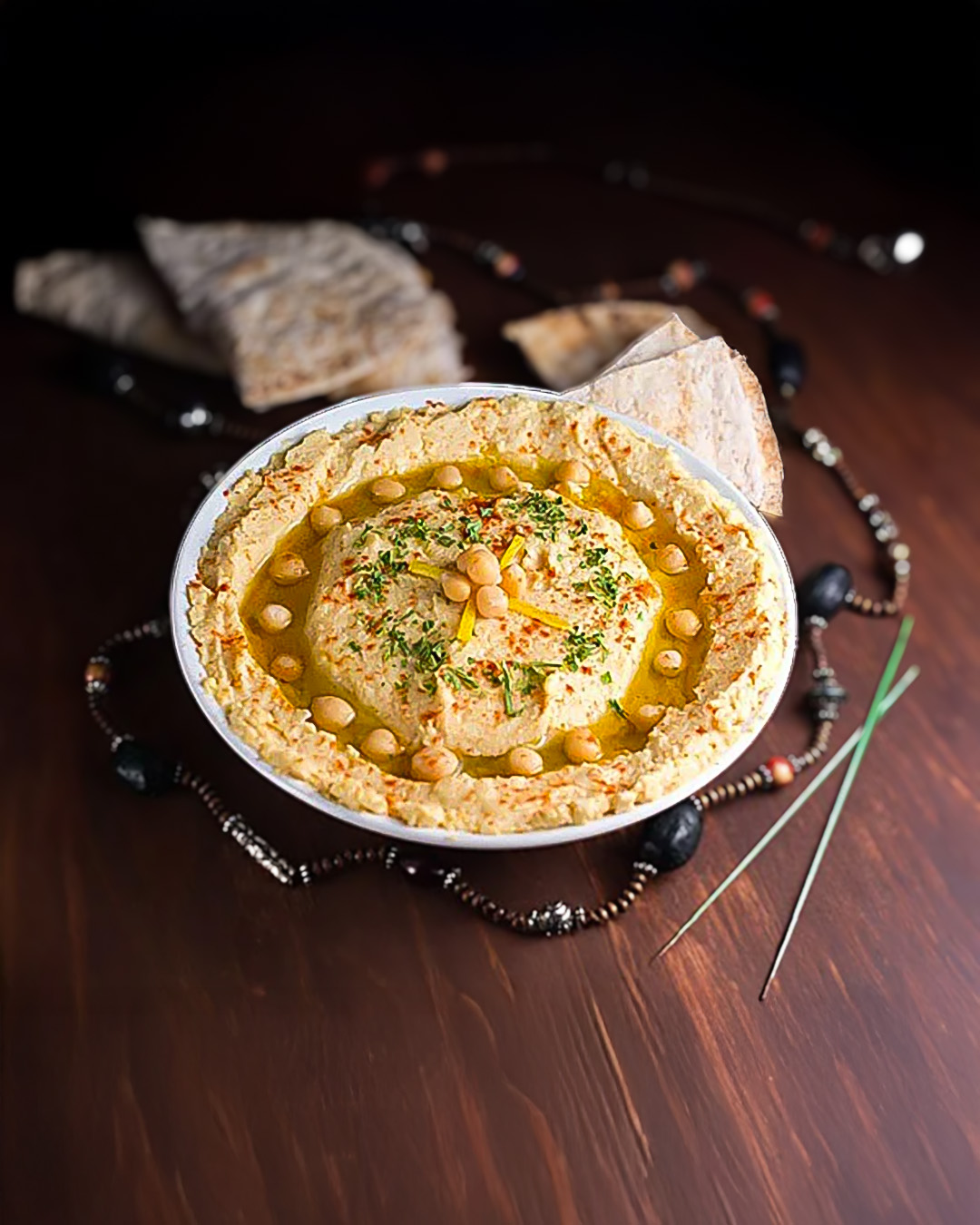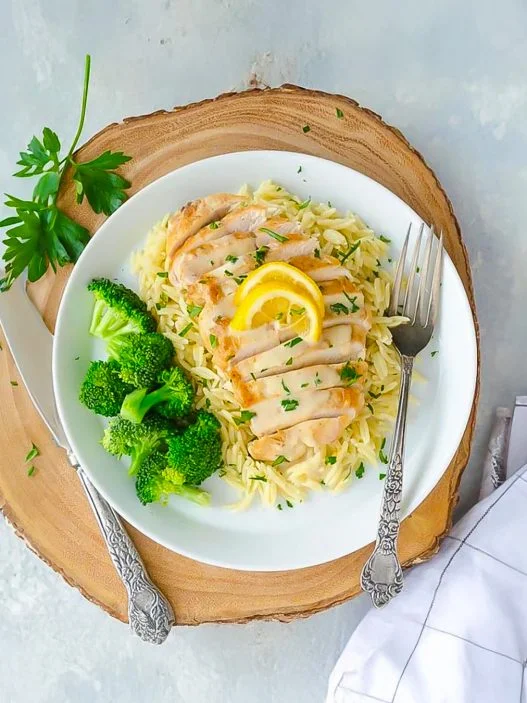French and Japanese cuisine have long stood as two of the main pillars global of fine dining. At Restaurant Yuu, an 18-seat tasting counter in Greenpoint, Brooklyn, the two meet, where Yuu Shimano uses French techniques expressed through a Japanese lens.
Since earning a Michelin star just months after opening, Yuu has built a following among New York City’s “best dining experience hunters”. The restaurant offers only a prix fixe tasting menu, with seatings at 6 p.m. and 8 p.m. And while the price may be steep, for the quality, care, and sheer number of courses, it’s a worthy splurge.
The Atmosphere
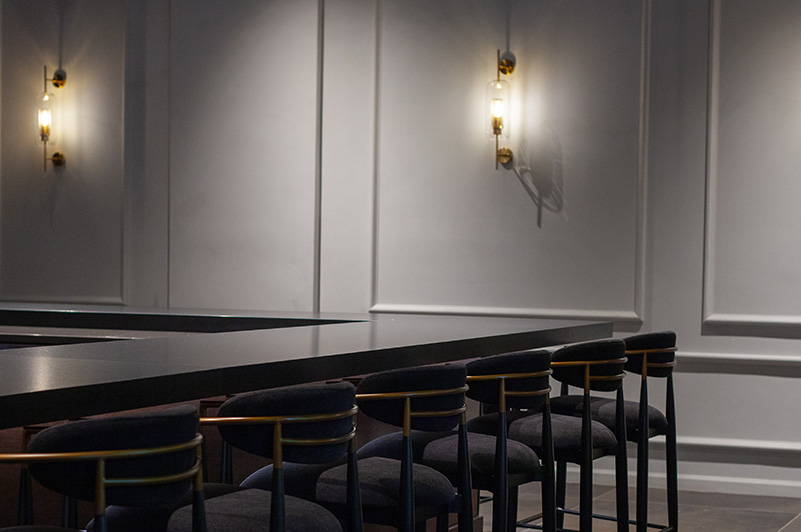
Eighteen seats line a sleek black counter, where chefs appear from behind a thick dark curtain. Details speak of intention; Arita ware holds each course, and the near-invisible service seems to anticipate your needs before you realize them. Napkins are replaced in an instant, chairs subtly adjusted, glasses refilled at just the right moment. Each “thank you” met with a warm smile. Before the curtain opens, couples, close friends, and returning regulars sit in stillness, watching the open kitchen with anticipation.
A Taste of the Summer Menu
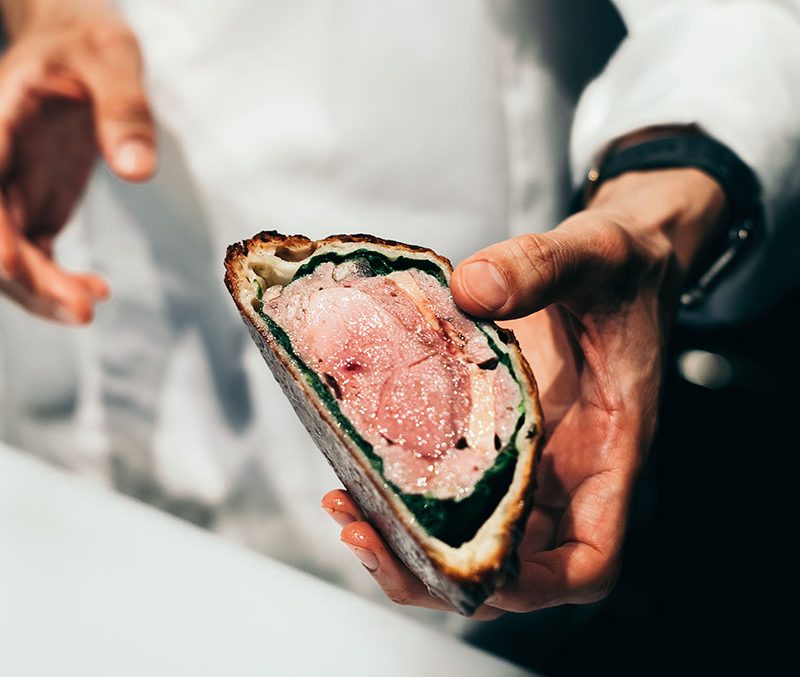
The meal begins with an amuse bouche trio: a chilled vichyssoise that’s impossibly silky; fluke shuto with a hint of briny salt; and foie gras, deep and rich, brightened with red shiso. For those wanting a more luxurious start, there’s an optional Caviar Brioche—two bites of buttery, toasted brioche topped with 20 or 40 grams of caviar ($65 / $130). Because why not?
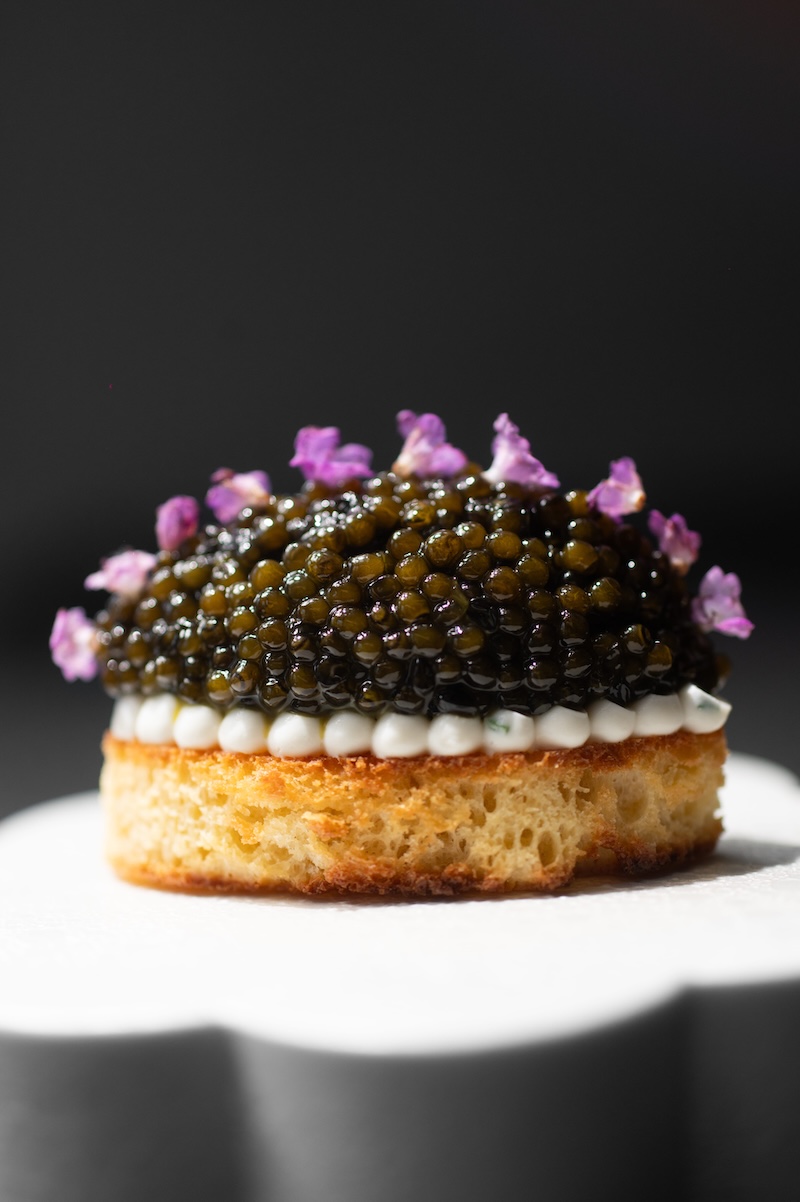
Next comes Abalone, tender and thinly sliced among summer vegetables, finished with an abalone liver sauce and a refreshing spoonful of lemon basil granité. The Wagyu Tartare features Miyazaki wagyu paired with potato and toasted pine nuts. A warm eggplant sauce pours tableside. It’s earthy and creamy, pulling all flavors together. Next in the Risotto d’Oro, lobster stock infuses the rice with deep richness, while a gleaming piece of sea urchin on top adds oceanic brightness.
Another seafood dish follows, its the Amadai, a prized white fish in Japan, served with fig leaf, Meyer lemon, and green pea foam. Next a slice of White Sesame Plain Rustique a deeply toasty, crusty bread served with herbaceous crown daisy butter. It serves as a grounding moment between courses. Then its the Squab. It’s a bit pink when cut and lightly smoked. Two sauces accompany it, one dark and robust with red wine and cacao, the other lighter made with celery root and pear. Ingredients artichokes, morel mushrooms, and anchovy adds depth and texture.
The signature Canard (00768) follows. Think duck Wellington but make it French and Japanese. A crisp phyllo shell wraps dry-aged duck breast, minced duck leg, and mushroom duxelles. A rich reduction of black pepper, cognac, and foie gras pools at its base. For an extra $30, a generous shaving of Chilean winter truffle completes the dish.
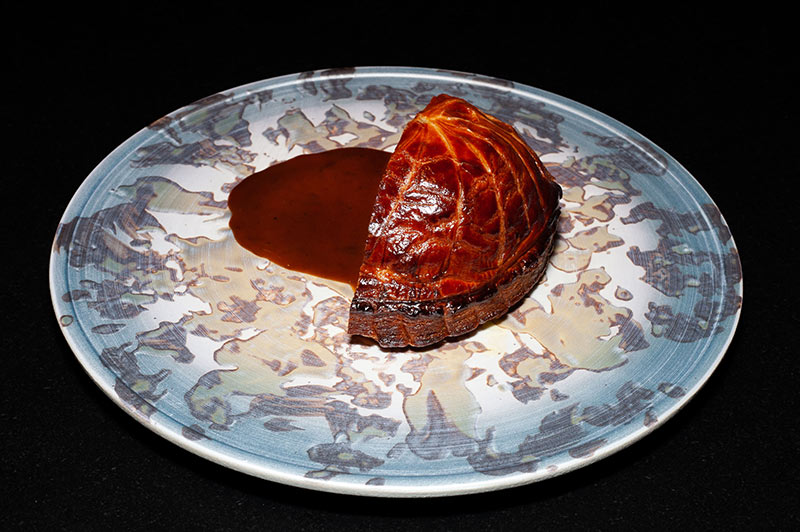
Dessert comes in two acts: first, pineapple, passion fruit, sansho pepper leaf, and gin—a bright, tart, palate-cleansing blend. Then, a delicate jelly of fresh peaches and raspberries, topped with almond ice cream and finished with a thick, floral jasmine tea sauce.
Behind the Counter: A Conversation with chef Yuu Shimano
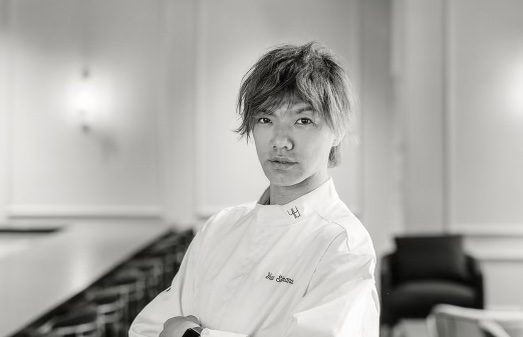
Q: What inspired you to combine traditional Japanese and French culinary techniques?
A: I spent many years in France training in classical French cuisine, and have been drawn to its techniques. As a Japanese chef, I’ve cherished the cultural values I grew up with. Being in New York, where diverse cultures intersect, I feel a strong sense of purpose in expressing French cuisine through a Japanese lens.
Q: Can you tell us about a dish on the summer menu that’s especially meaningful to you?
A: Our squab dish is one that holds special significance. It features seasonal vegetables—artichokes, morel mushrooms, chicory lettuce—that evoke the arrival of early summer. The squab, slow-roasted to a beautiful pink and gently straw-smoked. The sauce combines red wine and cacao with celery root and pear. Though it includes many elements, the dish brings everything together harmoniously.
Q: The Canard (00768) is incredible. Can you walk us through its origin and why it has a permanent place on the menu?
A: It’s built on classical French techniques I learned during my training, especially at Guy Savoy. It takes several days to prepare and requires precise teamwork. It represents our dedication to craftsmanship and what we strive to express as a restaurant—so it’s become our signature.
Q: What did earning a Michelin star mean to you and your team?
A: It was a tremendous joy—but also a reminder of the pressure that comes with recognition. It reaffirmed the importance of not only maintaining our standards but continuing to grow. We’re committed to improving every day.
Q: What do you hope Restaurant Yuu contributes to New York’s dining scene?
A: We’re trying to present authentic French cuisine through a Japanese perspective. We want to share Japanese aesthetics and sensibilities and contribute to the broader recognition of Japanese chefs globally.
Restaurant Yuu


